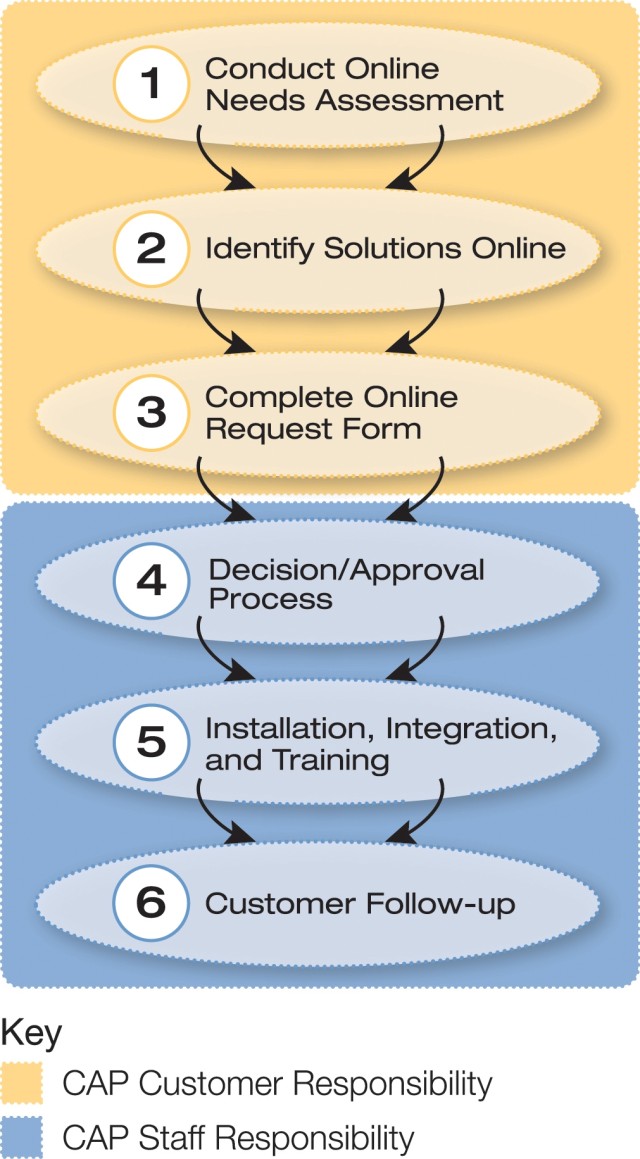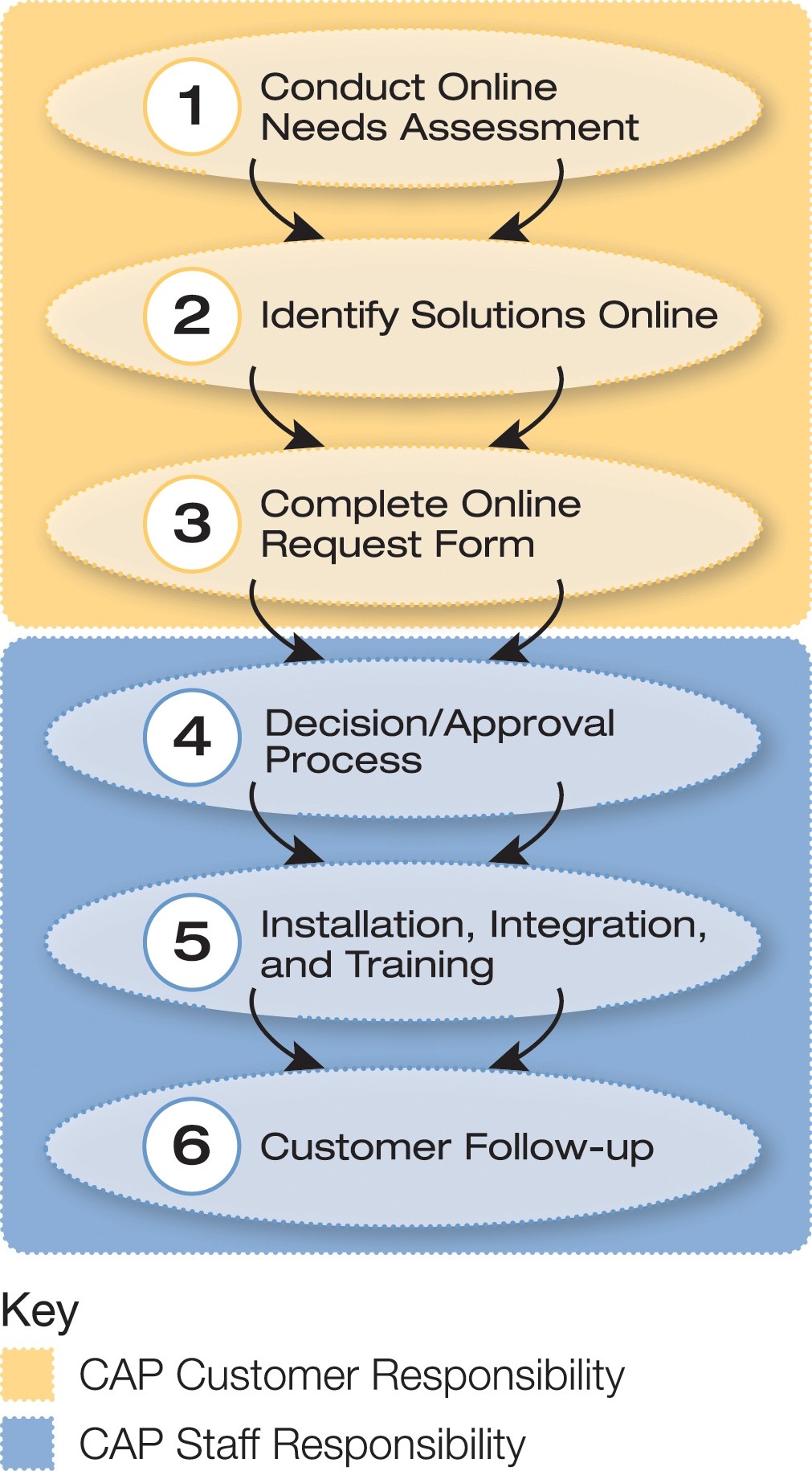This article is the third in a five-part series regarding working with employees who have disabilities. Check on the latest updates in the next
edition of the Sentinel.
FORT MCPHERSON, Ga. -- The Computer/Electronic Accommodations Program (CAP) ensures individuals with disabilities have equal access to information, the environment and opportunities in the DoD and throughout the federal government.
CAP helps the federal government work to become the model employer for people with disabilities by trying to increase the recruitment, replacement, promotion and retention of people with disabilities and wounded servicemembers through eliminating the cost of accommodations.
"It really levels the playing field for persons with targeted disabilities," explained Dinah Cohen, CAP's director since 1990. "It eliminates the issue for many employers to provide accommodations for employees with disabilities."
Established in 1990 and centrally funded by the DoD, CAP has partnerships with 65 federal agencies and has made 71,000 accommodations since its inception. According to CAP's annual report, in fiscal year 2007 alone, CAP filled 8,775 accommodation requests for federal employees with disabilities and wounded servicemembers. Of this total, 3,202 accommodations were for DoD employees and 2,998 accommodations were for wounded servicemembers.
The CAP staff works closely with human resource managers; federal managers, supervisors and applicants; and employees with disabilities. CAP provides assistive technology, education, training and support to government employment and training centers to ensure people with disabilities have equal access to career opportunities and advancement throughout the employment lifecycle.
Assistive technology is any device or equipment that helps individuals with disabilities function more independently.
By using assistive technology products, employees with disabilities can improve their portfolios and are more likely to be recognized for their performance and promoted to more responsible positions.
"CAP works with individuals to help identify, evaluate and select the appropriate modification or adjustment to the work environment to maintain, increase and improve their ability to perform the essential functions of their job," explained Carolyn E. Cratic, garrison Equal Employment Opportunity specialist.
Although CAP does not sell products, it does provide objective information about assistive technology products and rehabilitation equipment for people with all types of disabilities, including both apparent physical disabilities and hidden cognitive disabilities.
CAP's first step in providing assistive technology products is to help identify the specific disability that requires an accommodation.
Because people with disabilities have varying degrees of disabling conditions, choosing an accommodation is best done on a case-by-case basis. To ensure that the appropriate accommodations are received, CAP recommends that the CAP Online Needs Assessment be completed by the employee.
The CAP Online Needs Assessment uses information on the employee, the job and the disabling condition to determine the most appropriate assistive technology solution. This form can be found at www.tricare.mil/cap/accom_process/request.cfm.
After finding the best accommodation for a disability, the user must submit an Accommodation Request Form. This form can be found at CAP's homepage at www.tricare.mil/cap/ by clicking on the "Submit Request Form" tab. CAP's homepage also has a link for users to browse assistive technology products, with a picture and brief description of each device.
"Most of the time, it takes 15 to 20 days for people to get their accommodation," Cohen explained.
CAP also provides people to teach employees how to operate their assistive technology in their work environment. CAP covers the cost of this training for federal employees.
"CAP not only buys it (the assisted technology), it pays for it, gets it to the users and trains individuals on how to use it," Cratic emphasized. "It's just that simple."
CAP will also provide sign language and oral and tactile interpreting for DoD's deaf and hard of hearing employees who attend DoD-sponsored information technology or computer-based training courses. The only restriction is that the training sessions must be at least two days long.
To support training for individuals with visual impairments, CAP funds the assistance of readers during long-term training sessions. CAP also pays for personal assistants to support training requirements of individuals with mobility impairments, but the assistants will only be provided for training session times.
"We've had some major milestones this year," Cohen said. "We broke our previous record for number of provided accommodations. By the end of the fiscal year, CAP will fill 10,000 accommodation requests among federal employees and wounded servicemembers."
These figures are based on the number of accommodations provided, rather than the number of people who have been provided with accommodations. Many employees, especially wounded servicemembers, need multiple accommodations.
"This year alone, CAP has filled more than 4,500 accommodation requests for wounded servicemembers," Cohen added.
Breaking records is not the only recent accomplishment by CAP.
"We have implemented the new DoD initiative in support of wounded servicemembers, where they can retain their assistive technology from CAP," Cohen explained. "That's big."
This new initiative allows servicemembers injured while on active duty to retain the assistive technology and services provided by CAP when they separate from active duty. This allows many servicemembers to continue their education or return to the workforce with the use of CAP-provided assistive technology.
CAP also works with the Job Accommodation Network (JAN).
"CAP and JAN work very closely together," Cohen said. "If they need an assistive technology and work for the federal government, JAN will recommend they contact CAP."
As the federal government strives to meet the Equal Employment Opportunity Commission goal of 2 percent of individuals hired by 2010 having targeted disabilities, CAP and its partnership coordinator, Sharon Terrell-Lindsay, are helping agencies be proactive by introducing GetFit, a general strategy for federal agencies with a goal of creating a plan to be the model employer of people with disabilities.
There are four steps to the GetFit initiative:
-- Look at the health of an agency's disability employment regarding discrimination cases, disability retirement and worker's compensation.
-- Create an exercise plan by setting goals and building on documented success.
-- Train and develop personnel and agency knowledge of employing individuals with disabilities.
-- Review improvements and obstacles and build on what has already been learned.
CAP's service and support can improve the work environment and productivity. Hiring qualified individuals with targeted disabilities expands an employer's pool and comes with the incentive that needed accommodations are free.


Social Sharing